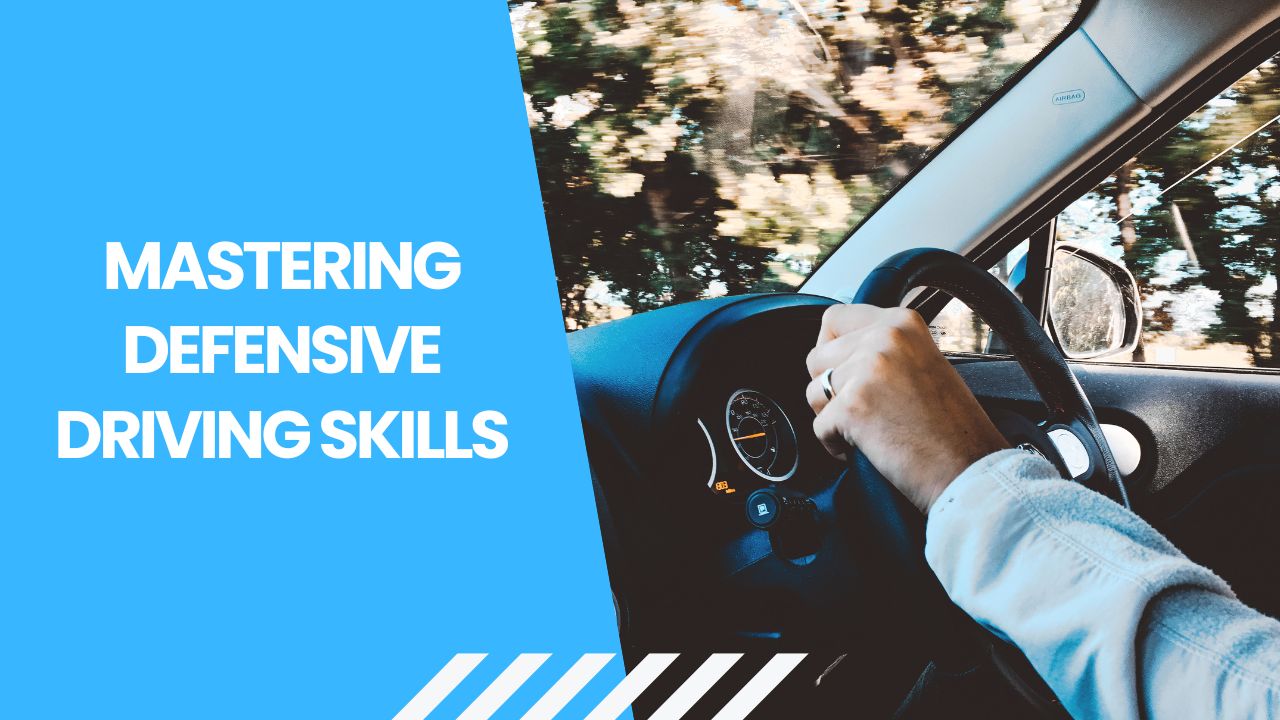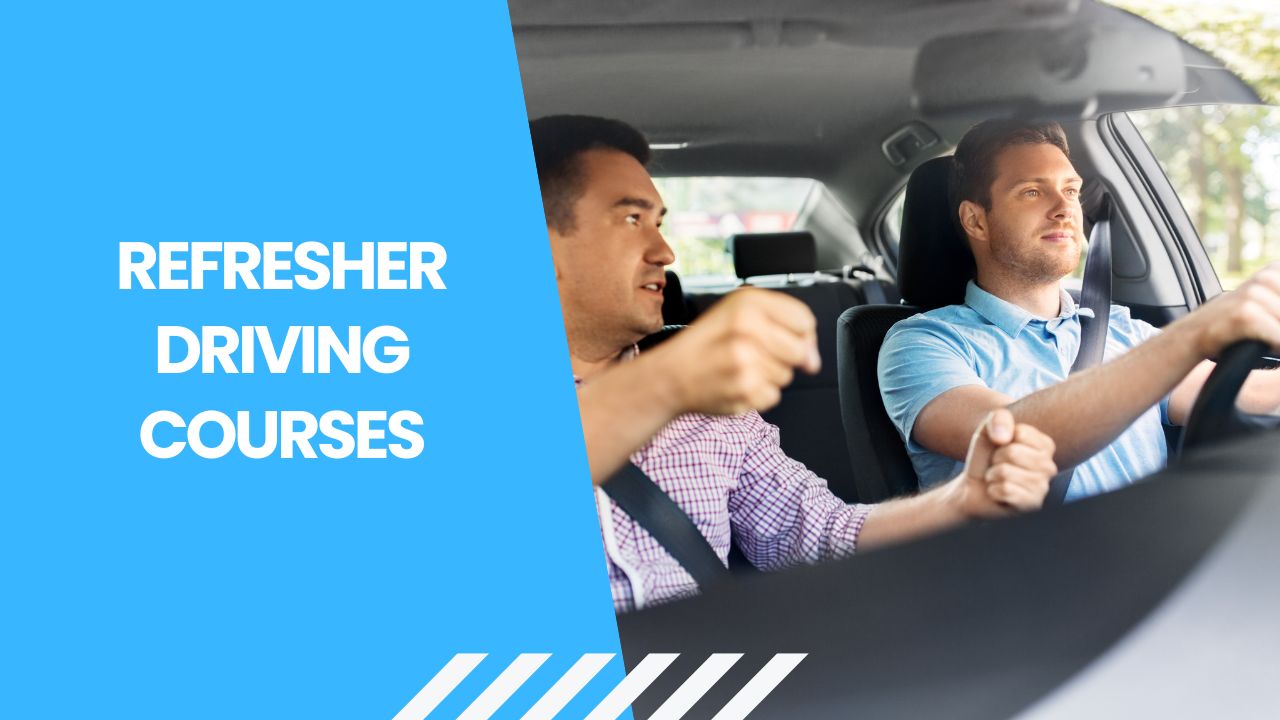In today’s fast-paced world, road safety is more important than ever. Whether you’re a new driver or someone who’s been behind the wheel for years, mastering defensive driving skills can make the difference between avoiding accidents and becoming part of one.
Defensive driving isn’t just about following traffic laws — it’s about anticipating potential hazards, staying alert, and making smart decisions that protect you, your passengers, and others on the road. Let’s explore what defensive driving means, why it’s essential, and how you can develop these life-saving skills.
What is Defensive Driving?
Defensive driving is a set of driving techniques that help you reduce risks by anticipating dangerous situations — even when others make mistakes. It’s about staying proactive rather than reactive. Instead of trusting that other drivers will always follow the rules, you assume they might not — and drive accordingly.
This approach focuses on awareness, preparedness, and control. The goal is simple: to prevent accidents by adjusting your driving to suit conditions, traffic, and potential hazards.
Why Defensive Driving Skills Matter
Defensive driving saves lives. According to the World Health Organization, road accidents are among the leading causes of death globally. Most of these accidents are preventable with the right mindset and skills behind the wheel.
Here’s why learning defensive driving matters:
- Reduces accident risk: You’re less likely to be involved in a collision when you anticipate other drivers’ mistakes.
- Lowers insurance costs: Many insurance companies offer discounts to drivers who complete defensive driving courses.
- Improves confidence: You’ll feel more in control and less anxious while driving.
- Saves money: Fewer accidents mean lower repair costs, fines, and medical bills.
- Promotes road discipline: Defensive drivers help create safer, more responsible traffic behavior overall.
Core Principles of Defensive Driving
To become a defensive driver, you need to follow a few key principles that focus on awareness, prediction, and prevention.
1. Stay Focused and Alert
Distractions like texting, eating, or adjusting music reduce your reaction time. Always keep your eyes on the road, hands on the wheel, and mind on driving.
👉 Tip: Follow the “10-second scan” rule — constantly scan your mirrors and surroundings every 10 seconds to spot potential dangers early.
2. Maintain a Safe Following Distance
The three-second rule is the foundation of defensive driving. Stay at least three seconds behind the vehicle in front of you, and increase that distance in bad weather or at higher speeds. This gives you enough time to brake or maneuver if something unexpected happens.
3. Obey Speed Limits
Speeding reduces your control and increases stopping distance. Even a few extra miles per hour can be dangerous in sudden situations. Adjust your speed based on traffic flow, road conditions, and visibility.
4. Expect the Unexpected
Never assume other drivers will do what’s right. Someone might suddenly change lanes, run a red light, or fail to signal. Always keep an eye on potential escape routes and prepare to react safely.
5. Avoid Aggressive Driving
Tailgating, honking, or racing other vehicles only increases the risk of accidents. Stay calm, patient, and courteous — road rage never helps. Defensive drivers prioritize safety over ego.
6. Adjust to Weather and Road Conditions
Rain, fog, ice, or construction zones demand extra caution. Slow down, increase your following distance, and use headlights appropriately. Avoid sudden braking or acceleration on slippery roads.
7. Know Your Vehicle
Familiarize yourself with your vehicle’s braking system, blind spots, and handling. This helps you respond effectively in emergencies.
Defensive Driving Techniques You Should Practice
1. Mirror Checks
Constantly check your mirrors — rearview, side, and blind spots — especially before changing lanes or turning. Awareness of your surroundings gives you more time to react.
2. Use of Signals
Always signal your turns and lane changes well in advance. This simple habit helps others predict your actions and prevents confusion on the road.
3. Anticipate Green Light Transitions
When approaching intersections, look both ways before proceeding — even if you have a green light. Many accidents occur when drivers rush without checking cross-traffic.
4. Keep Escape Routes in Mind
Always have an alternative plan in case another driver swerves into your lane. Knowing your options — such as open shoulders or empty lanes — helps you react quickly.
5. Watch for Pedestrians and Cyclists
Urban and residential areas require extra attention. Defensive driving isn’t just about avoiding cars — it’s about protecting everyone on the road.
Common Mistakes That Defensive Driving Can Prevent
- Rear-end collisions: By maintaining proper distance.
- Intersection crashes: By scanning both ways even on green.
- Side-impact crashes: By checking blind spots before lane changes.
- Run-off-road accidents: By staying alert and avoiding distractions.
- Multi-vehicle pile-ups: By reacting early and maintaining space during heavy traffic or bad weather.
Benefits of Taking a Defensive Driving Course
Even experienced drivers can benefit from a professional defensive driving course, which offers hands-on training and in-depth road safety education.
Key Benefits
- Learn advanced driving techniques like skid control and emergency braking.
- Refresh your understanding of updated traffic laws.
- Lower your insurance premiums (in many states and provinces).
- Improve your confidence behind the wheel.
- Reduce penalty points or fines in some regions.
If you’re in Canada or the U.S., enrolling in a certified driving school that offers defensive driving courses — such as those in Calgary or Toronto — can significantly enhance your driving safety and confidence.
How to Develop Defensive Driving Habits
- Drive mindfully: Treat every trip as a test of focus and discipline.
- Reflect after driving: Review how you handled situations — what you did right or could improve.
- Stay updated: Traffic rules evolve. Keep learning.
- Lead by example: Inspire others — friends, family, or teens — to drive safely.
Final Thoughts: Defensive Driving is Smart Driving
Defensive driving isn’t just a skill — it’s a mindset. Every time you sit behind the wheel, you have the power to prevent accidents and make the road a safer place for everyone.
By staying alert, anticipating potential hazards, and driving responsibly, you can protect lives — including your own. Whether you’re a beginner or a seasoned driver, embracing defensive driving techniques will help you stay one step ahead of danger.
So, the next time you hit the road, remember: Drive not just to reach — drive to arrive safe



